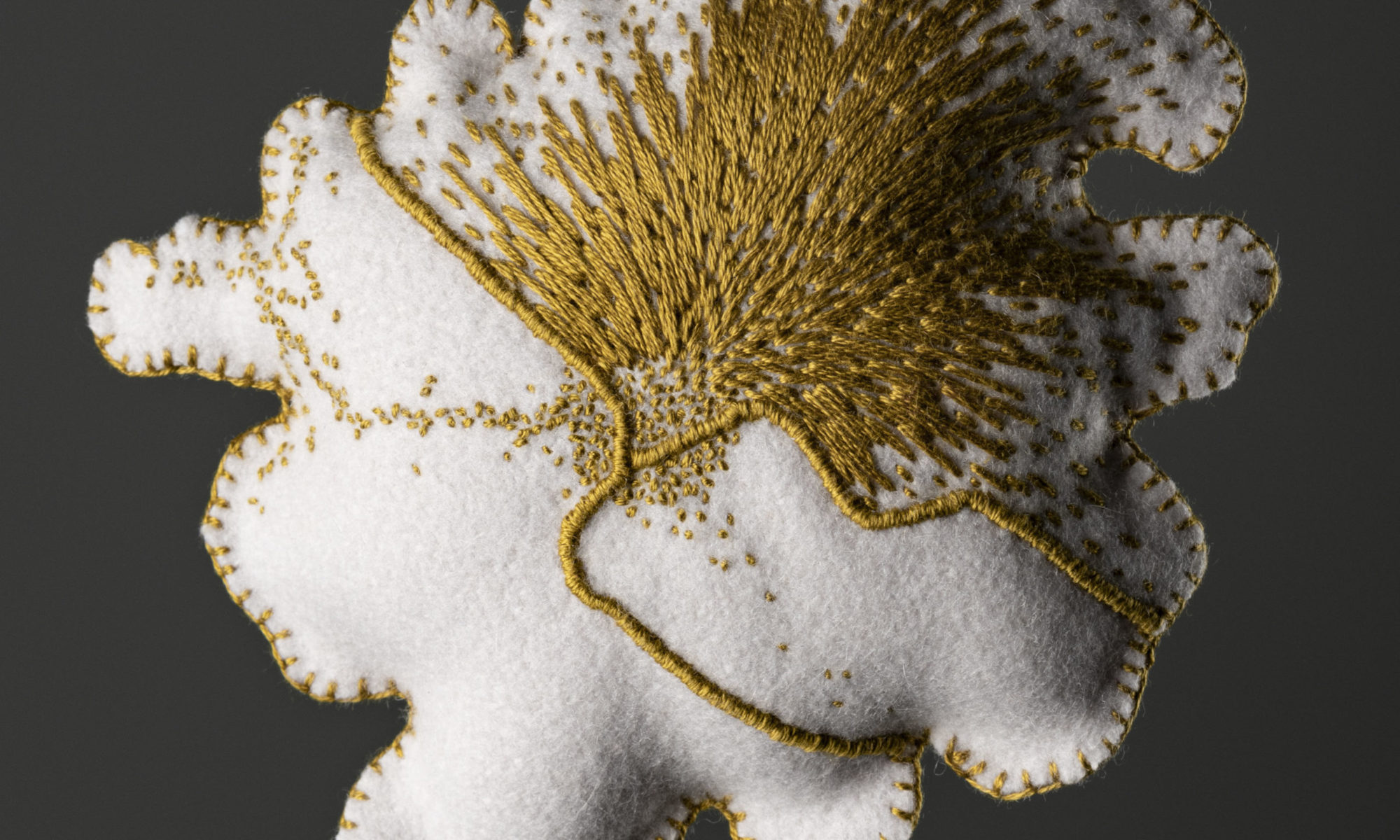


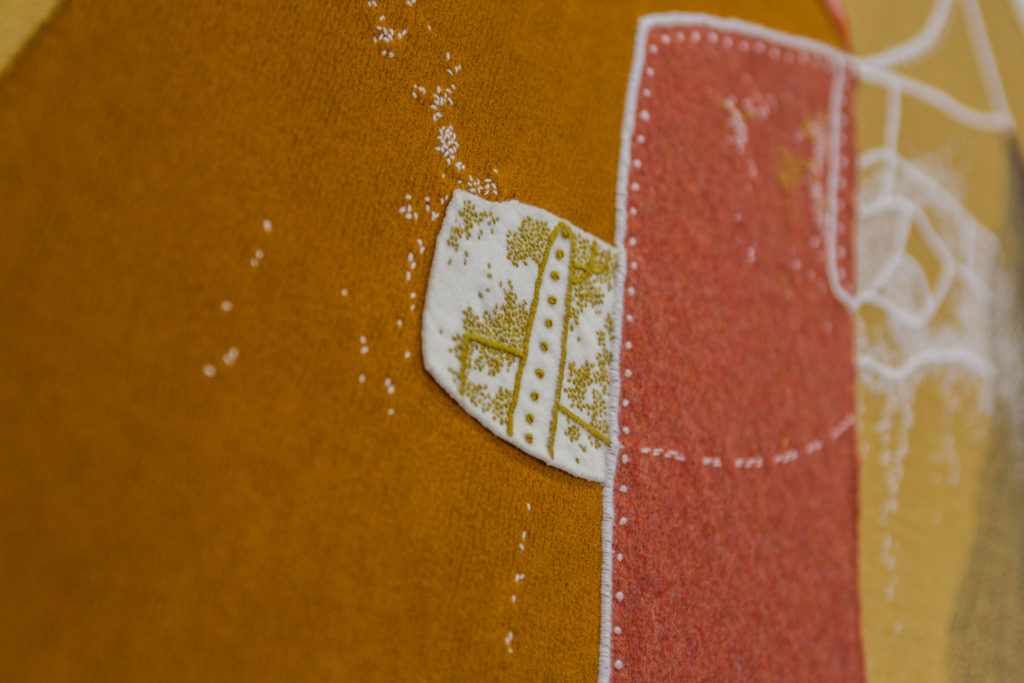
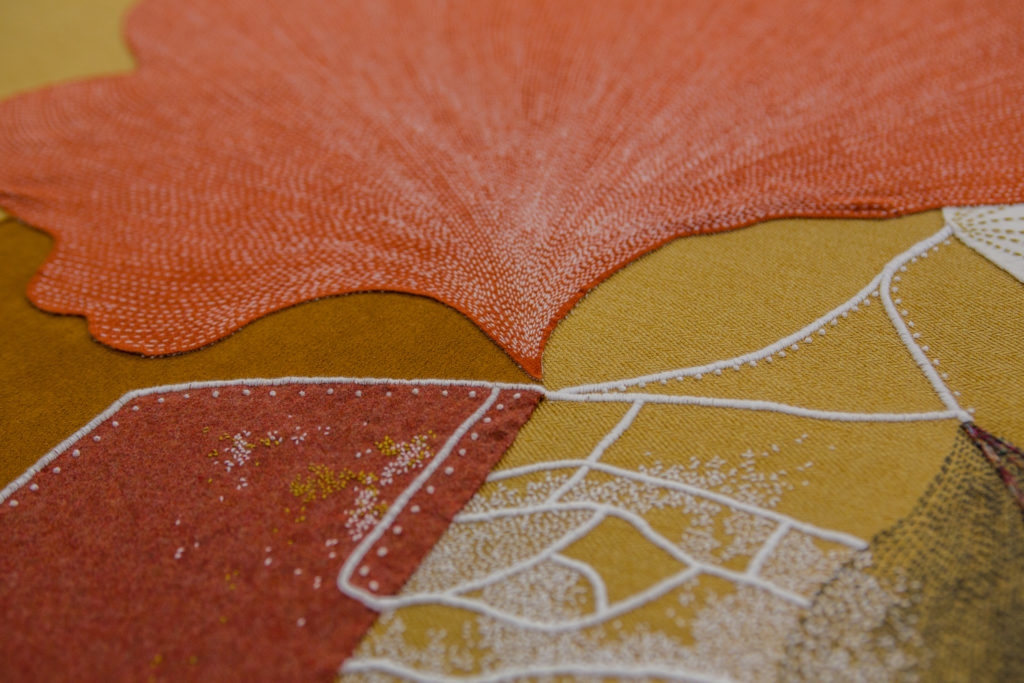
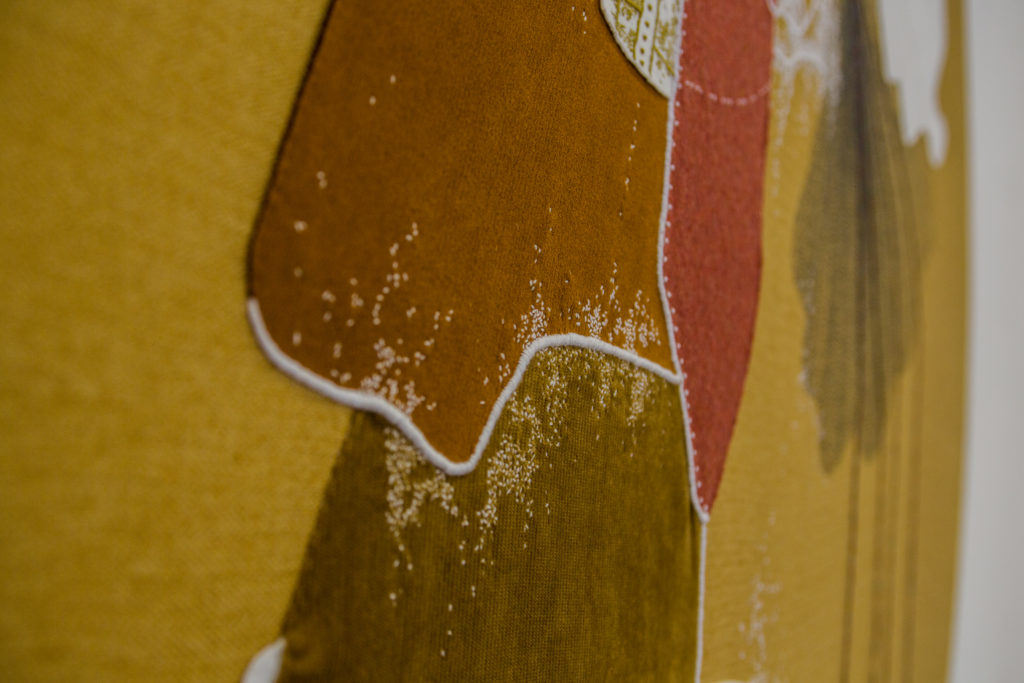


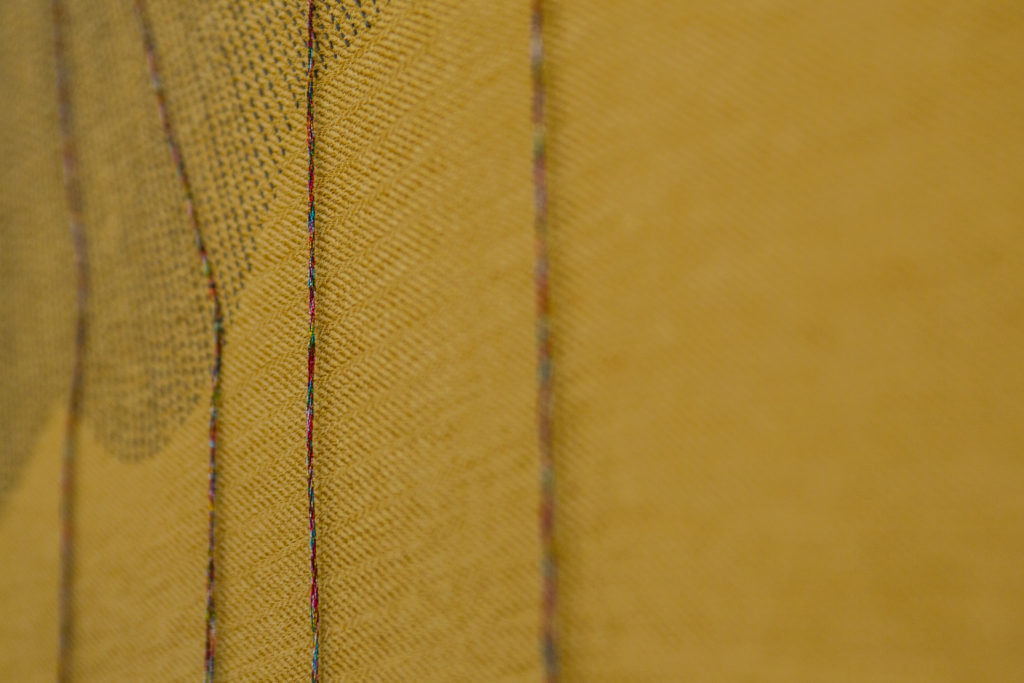
Hand embroidery, various textiles, cotton & metallic threads, diameter 145 cm, 2020-21
This work is the story of an encounter. The unexpected, gentle or complicit encounter with the other. The decisive and brutal encounter with a context: a pandemic. Whatever it is, the encounter allows us to constitute what we are because it is the experience of what is not ourselves. It is taking the measure of the otherness of the other and then experiencing who we are, who we want to be. The encounter is to decentralize oneself to better refocus on oneself. It only has a hold on us, on our future changes, if we decide to, if we allow ourselves to live it fully. It is then to feel at the end of it more open, more awake, more present to the world. Without it, we will die and during all this period, that of COVID, from the first confinement until today, I wanted to live!
When we were deprived of contact, I unconsciously drew lines on Gingko leaves. Like directions, strong links, veins of life, I moved towards the other. By their colors, these three leaves express lightness, softness and passion. The Ginkgo symbolizes a strong, mystical nature. The only surviving tree from Hiroshima, it represents immortality, endurance and vitality in the East. Through its quiet strength, it invokes hope. Nature is my mystical element, of the order of mystery. Something that moves me, touches me deeply. Something that I do not master, that escapes me. Something much bigger than me, which encompasses me, contains me without absorbing me. I then feel part of a whole. In this idea of “making links”, to nature, to the environment or to others, it is a question for me of being in a “right” place, of not cutting my link, on the contrary of questioning it and adjusting it.
These visible links are also the expression of invisible links, those of the encounter that nourishes and endures through time, beyond the events. These strong links, woven, anchored, make these lines, these tears, these colors spring forth like an impulse, a passion, a furious desire to give. The hands, as Aristotle said, “extend the spirit”. Here the spirit lets go and the hands remember. Everything is there, everything comes from what has been given. The title Lagrimas, means “tears” in Spanish. Tears of joy, sadness, tears of life, those that make certain moments intense. Here the tears are colored, frayed, they shine and flow like a spurt, a renewal. We do not know the cause of these tears, we are simply the spectator of the consequence.
In this work, we can read a face, presented from the front without apparent gender. It looks us in the eyes, it is posed facing us. The elements of the face such as the eyes and the mouth are made up of a multitude of white and golden dots. These dots pile up, escape as if to see or express beyond what we perceive, what is said. This face is partly contained by colored plates that are juxtaposed and for the second half, delimited by the leaves of Ginkgo. This face can also be read from above, from above, like a cartography. It then becomes a landscape delimited, bounded, drawn. By a game of inversion, this landscape drawn, contained, becomes a face. This complementarity which seems to be opposed questions the interactions of the man with his environment. Like an “inventory of the moment”, Lagrimas poses a glance which tries to adjust and to harmonize what makes us alive, vibrant.
